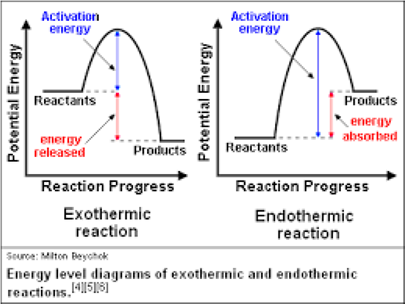alkaline phosphatase isoenzymes?
Isoenzymes
It was a tremendous step forward for research on the biochemistry of differentiation when it was discovered that some of the universally distributed enzymes have different molecular forms with a variety of subunits, characteristic of different tissues. Market and Møller (1959) were the first to make a survey of the patterns of nonspecific esterases in developing tissues of vertebrates and to recognize tissue-specific differences both in the activities of the different enzymes and in their polypeptide subunits.
A general survey
of isoenzyme changes during development in amphibians was carried out
by Chen (1968). He compared proteins extracted from embryonic, larval, and
adult stages of three species, Bombina variegata, Rana temporaria, and Triturus alpestris, and
identified subunits of lactate dehydrogenase (LDH), malate
dehydrogenase (MDH), alcohol dehydrogenase (ADH), and
glucose-6-phosphate dehydrogenase (G6PDH).
Isoenzymes (or isozymes)
are a group of enzymes that catalyze the same reaction but have
different enzyme forms and catalytic efficiencies. All living systems
apparently require multiple molecular forms of certain enzymes in order to
maximize biological capacity. In a restricted definition, “isozymes” are
different in genetic origins. The enzymes that have epigenetic differences due
to differential precursor processings, covalent modifications, and tissue
distributions are then called isoforms.
Isoenzymes (also called
isozymes) are alternative forms of the same enzyme activity that exist
in different proportions in different tissues. Isoenzymes differ
in amino acid composition and sequence and multimeric quaternary
structure; mostly, but not always, they have similar (conserved) structures.
Their expression in a given tissue is a function of the regulation of the gene
for the respective subunits
Isozymes arise from gene
duplications and/or different epigenetic modifications of a gene
product(s). In this sense, most of the recombinant enzymes with
deletion, insertion, and/or other mutations at the genetic level fall
into the category of isozymes. An example is the human alkaline phosphatases
which have at least three different genetic origins, i.e., for placental,
intestinal, and liver/bone/kidney enzymes are encoded by the same gene but differentially
modified in a tissue-specific manner. Most circulating ALP is the hepatic
isozyme, followed by the bone isoenzyme. Very little intestinal ALP is in
circulation. Placental form is present only in late pregnancy.
Causes of Abnormally High Levels
Hepatic isoenzyme: Increased
mostly with cholestatic diseases. Inducible with excessive
stress, pituitary pars intermedia dysfunction (equine Cushing's
disease) or corticosteroid therapy
Bone isoenzyme: Increased with
increased osteoblastic activity (young growing animals, bony lysis,
proliferative bone lesions, primary or secondary hyperparathyroidism)
Placental isoenzyme: is normally
expressed by the placenta during gestation Increases in alkaline
phosphatase in pregnancy are usually twice the upper limit of normal.
Elevations above normal are due to late pregnancy
Lactate dehydrogenase is an
enzyme that is present in almost all body tissues. Conditions that can cause
increased LDH in the blood may include liver disease, anemia, heart attack,
bone fractures, muscle trauma, cancers, and infections such as encephalitis,
meningitis, encephalitis, and HIV. LDH exists in 5 isoenzymes. Each isoenzyme
has a slightly different structure and is found in different concentrations in
different tissues. For example, LDH-1 is found mostly in red blood cells and
heart muscle. LDH-3 is concentrated in the lungs, although it is also found in
other tissues. When LDH isoenzymes spill into your blood, it indicates damaged
or diseased tissue. The results may tell your healthcare providers which tissue
may be damaged or injured. LDH isozymes consist of two genetically
distinct polypeptide chains, A (or M for muscle type) and B (or H for heart
type), which form varying combinations of tetrameric structures.
Normal ratios are:
- LDH-1
less than LDH-2
- LDH-5
less than LDH-4
When LDH-1 is greater than your
LDH-2, it could mean that we have anemia called flipped LDH because normally
your LDH-2 is higher than your LDH-1.
When your LDH-5 is greater than
your LDH-4 it could mean liver damage or liver disease. This includes cirrhosis
and hepatitis.
There are many isozymes that are
also act as regulators of mebloism or metabolic pathways the best example is
hexokinase
A hexokinase is
an enzyme that
irreversibly phosphorylates hexoses (six-carbon sugars),
forming hexose phosphate. In most organisms, glucose is the most
important substrate for hexokinases,
and glucose-6-phosphate is the most important product. Hexokinase
possesses the ability to transfer an inorganic phosphate group from ATP to a
substrate. Four distinct isozymes of hexokinase are reported e.g., The
human genome contains four genes encoding distinct hexokinase isoenzymes, named
HK1 to HK4 (HK4 is also known as glucokinase or GCK) HK (I, II, III, and IV)
are found at different levels throughout the body and each form displays unique
functional characteristics
- Hexokinase
I/A is found in all mammalian tissues, and is considered a
"housekeeping enzyme," unaffected by most physiological,
hormonal, and metabolic changes.
- Hexokinase
II/B constitutes the principal regulated isoenzyme in many cell types and
is increased in many cancers. It is the hexokinase found in muscle and
heart. Hexokinase II is also located at the mitochondria outer membrane so
it can have direct access to ATP. The relative specific activity of
hexokinase II increases with pH at least in a pH range from 6.9 to 8.5.
- Hexokinase
III/C is substrate-inhibited by glucose at physiological concentrations.
Little is known about the regulatory characteristics of this isoenzyme.
·
Mammalian
hexokinase IV, also referred to as glucokinase, differs from other
hexokinases in kinetics and functions.
·
Glucokinase
can only phosphorylate glucose if the concentration of this substrate is high
enough. It is half-saturated at glucose concentrations 100 times higher than
those of hexokinases I, II, and III. Hexokinase IV is monomeric, about 50kDa,
displays positive cooperativity with glucose, and is not allosterically inhibited by its product, glucose-6-phosphate.[4]










Lovely blog thanks for sharing online platform to everyone help read your blog for get information
ReplyDeleteData Analytics Course in Delhi
Best Computer Courses in Delhi